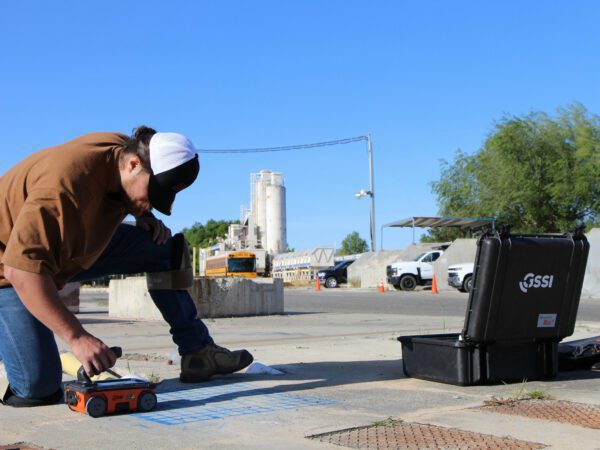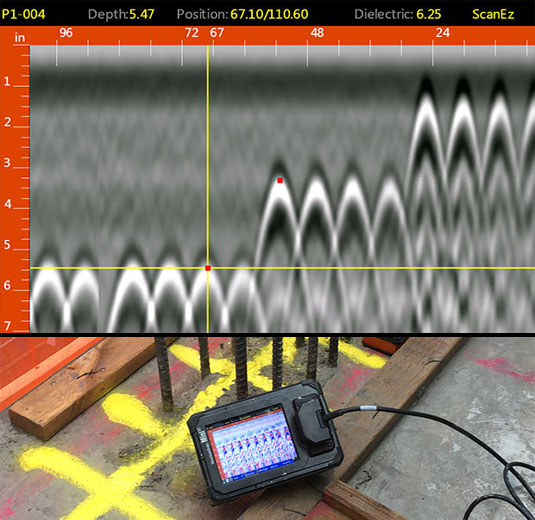Harness the Strategic Side of Concrete Scanning for Unparalleled Project Success and Quality Control
In the world of contemporary construction and facilities development, the usage of concrete scanning modern technology has arised as an essential device for ensuring task success and keeping top quality standards. This ingenious strategy provides a calculated edge by giving vital understandings right into the architectural stability of concrete aspects, consequently allowing educated decision-making throughout the job lifecycle. By diving into the midsts of concrete make-ups and revealing surprise abnormalities, stakeholders can proactively deal with possible threats, improve procedures, and enhance source appropriation. The real power of concrete scanning exists not just in its capacity to boost task end results yet additionally in its capability to change traditional techniques, establishing a brand-new benchmark for accuracy and performance in the building and construction sector.
The Importance of Concrete Scanning
Concrete scanning is a crucial action in construction projects to make certain the security and integrity of structures. By utilizing numerous scanning modern technologies such as Ground Passing Through Radar (GPR) and electro-magnetic induction, construction teams can non-destructively review the subsurface of concrete structures to identify possible threats like rebar, avenues, or post-tension cable televisions. This info is crucial for job designers, supervisors, and contractors to make informed decisions and avoid costly blunders during the construction procedure.
One of the key reasons that concrete scanning is so vital is its capability to avoid mishaps and injuries on the building and construction website. Accidentally reducing through a live electrical conduit or damaging post-tension cords can have tragic effects, not only in terms of security however likewise in terms of project hold-ups and financial implications. By conducting extensive concrete scanning prior to any drilling, cutting, or coring activities, construction teams can reduce dangers and develop a more secure working atmosphere for every person entailed.
In addition to safety and security considerations, concrete scanning additionally plays an essential duty in making certain the long-term toughness and top quality of the framework. By discovering any type of anomalies or defects concealed underneath the surface area, such as gaps or delamination, very early intervention can be implemented to resolve these issues before they escalate into more substantial troubles. Inevitably, purchasing concrete scanning is a positive measure that can save time, money, and sources in the future, while also upholding the highest possible standards of construction excellence.
Advanced Modern Technology for Precise Outcomes

Additionally, 3D scanning technologies provide a thorough sight of the subsurface setting by developing thorough electronic models. These models provide important insights into the architectural honesty of concrete components and assist in determining possible weaknesses prior to they rise right into significant issues. By incorporating these sophisticated technologies into concrete scanning techniques, building groups can simplify process, decrease task delays, and make certain the general top quality and success of the project. The accuracy and performance supplied by these tools add dramatically to the project's success by facilitating educated developing and decision-making top quality assurance actions.
Enhancing Job Effectiveness and Timelines

Moreover, concrete scanning allows groups to recognize possible threats and architectural weaknesses at an early stage, permitting prompt removal and preventing accidents that can thwart task timelines. The real-time data provided by scanning devices promotes notified decision-making, resulting in smoother coordination among various trades and stakeholders. This enhanced cooperation decreases disputes, enhances efficiency, and inevitably speeds up project shipment.
Furthermore, by proactively dealing with concerns with concrete scanning, construction groups can abide by schedules more properly, minimize downtime, and optimize source allowance. The capability to spot hidden barriers and verify structural honesty effectively adds to general project effectiveness and timelines, making certain successful end results and client satisfaction.
Ensuring Security and Risk Reduction

Threat mitigation approaches can be improved via the comprehensive information provided by concrete scanning, allowing project teams to make informed choices that minimize the likelihood of unforeseen incidents. In addition, by precisely drawing up subsurface conditions, service providers can stay clear of expensive rework, his response hold-ups, and damage to existing frameworks, further adding to general job safety and security and success. Executing concrete scanning as a routine method not just ensures a much safer workplace yet also instills self-confidence in stakeholders pertaining to the project's commitment to top quality and risk administration.
Top Quality Assurance With Concrete Scanning
Concrete scanning plays a crucial role in supporting quality control criteria within construction jobs. By using innovative scanning innovations such as Ground Passing Through Radar (GPR) and Concrete X-ray, project managers and engineers can guarantee the stability and high quality of concrete structures. With concrete scanning, possible issues, such as voids, cracks, or strengthening bar congestion, can be identified non-destructively, allowing for timely treatments to maintain the structural stability of the job.
Quality guarantee through concrete scanning not only assists in determining existing problems yet additionally allows positive procedures to stop future problems that could compromise the safety and security and longevity of the structure. By conducting extensive scans at crucial phases of construction, groups can confirm the accuracy of architectural strategies, validate the positioning of essential components, and address any deviations promptly. This proactive method lessens rework, minimizes pricey hold-ups, and inevitably results in the shipment of check top notch, durable frameworks that go beyond or meet market standards.
Conclusion
To conclude, concrete scanning plays a crucial role in guaranteeing project success, quality, performance, and safety assurance. By using innovative modern technology for accurate results, building jobs can be completed with higher accuracy and within timelines. The critical edge given by concrete scanning enables aggressive risk reduction and improves general job management. Integrating concrete scanning into construction procedures is crucial for accomplishing exceptional success and guaranteeing quality end results - RainierGPR Concrete Scanning.
In the world of contemporary building and construction and facilities growth, the application of concrete scanning technology has emerged as an essential device for making sure task success and maintaining high quality requirements. By integrating these sophisticated innovations into concrete scanning methods, building groups can simplify workflows, decrease job delays, and make sure the overall high quality and success of the task.Given the vital nature of job efficiency and timelines in construction monitoring, the focus currently changes towards ensuring safety and mitigating risks within the job setting.Concrete scanning plays an essential function in supporting quality assurance criteria within building projects. By utilizing innovative scanning modern technologies such as Ground Passing Through Radar (GPR) and Concrete X-ray, task managers and designers can guarantee the integrity and high quality of concrete structures.